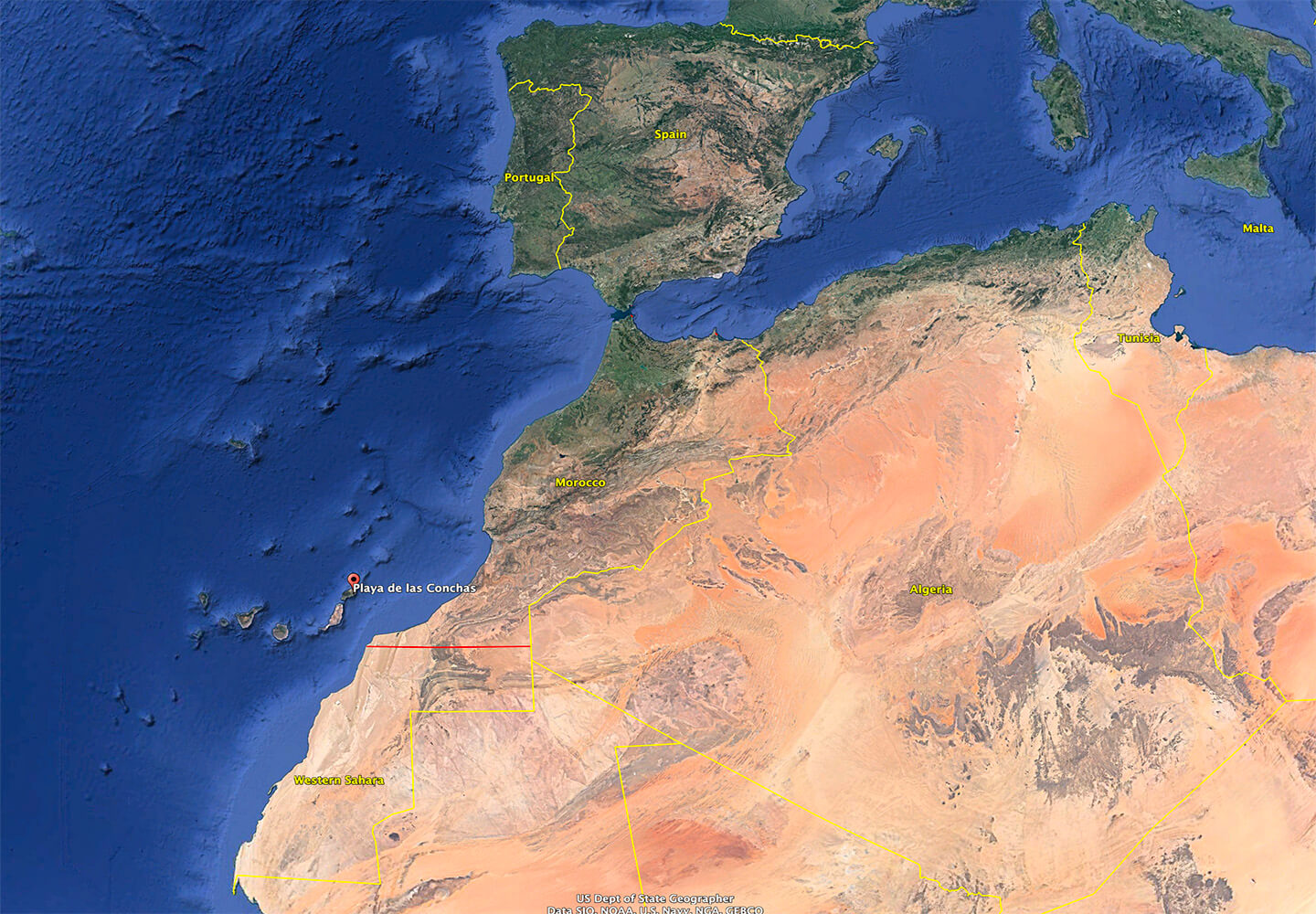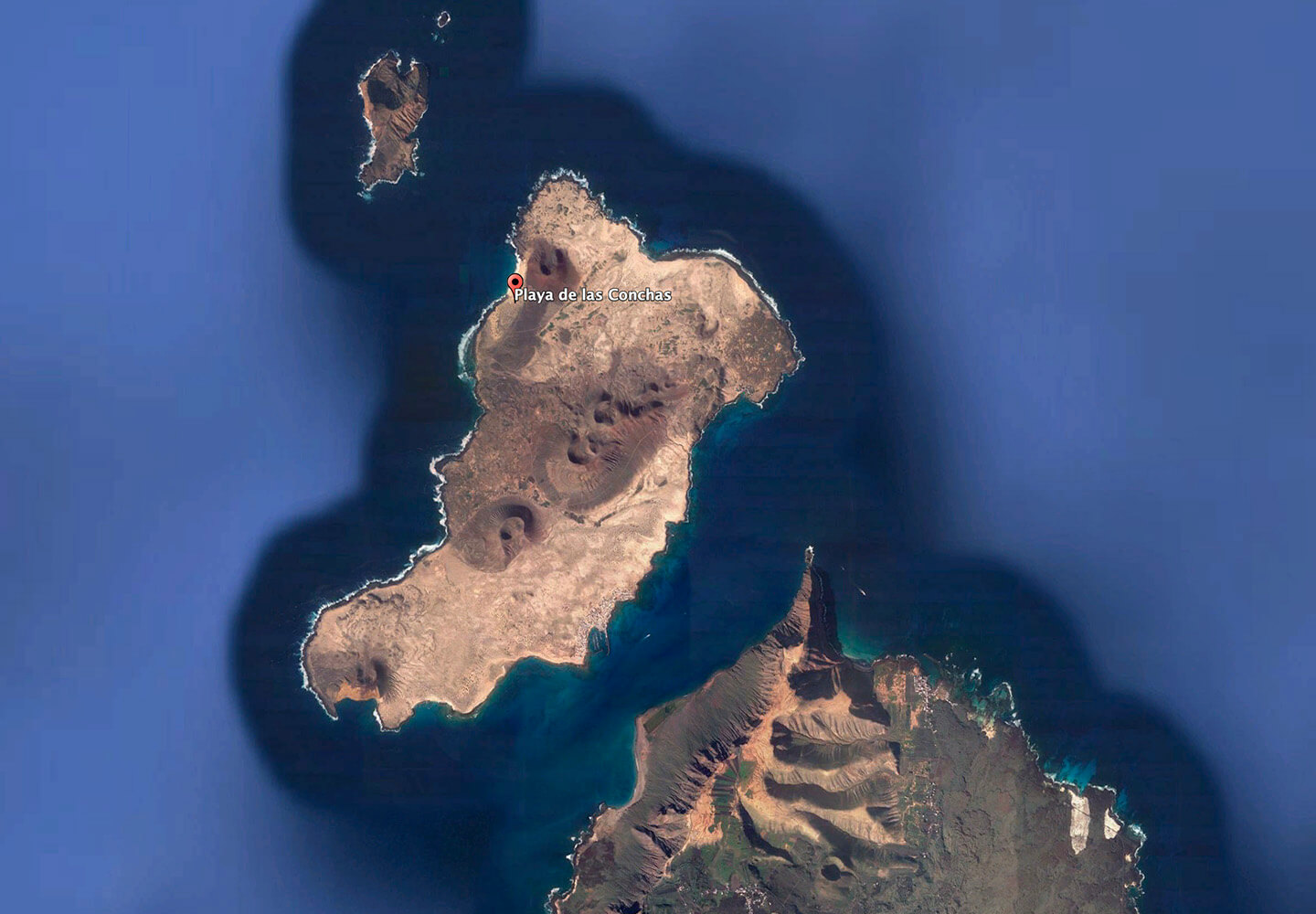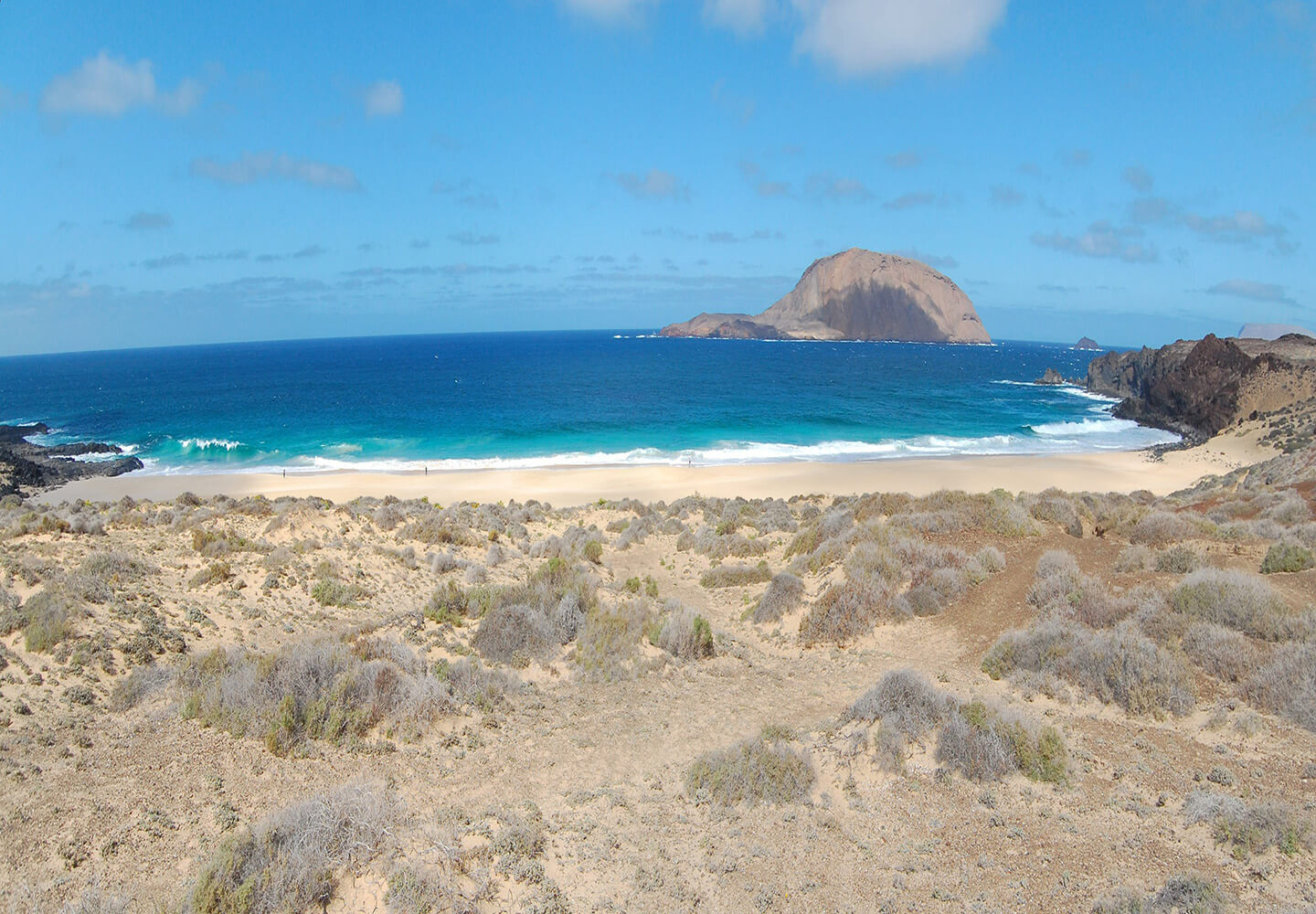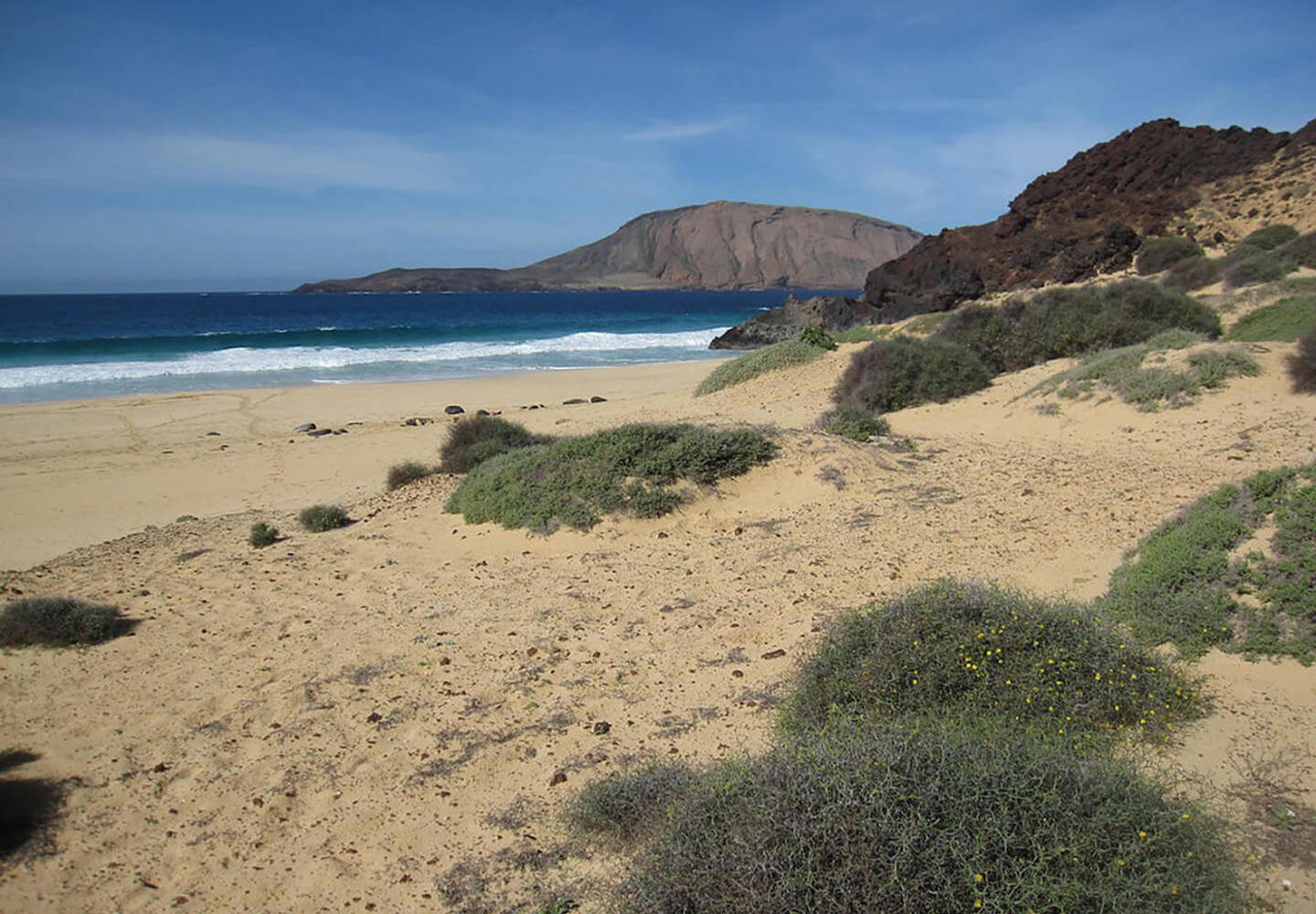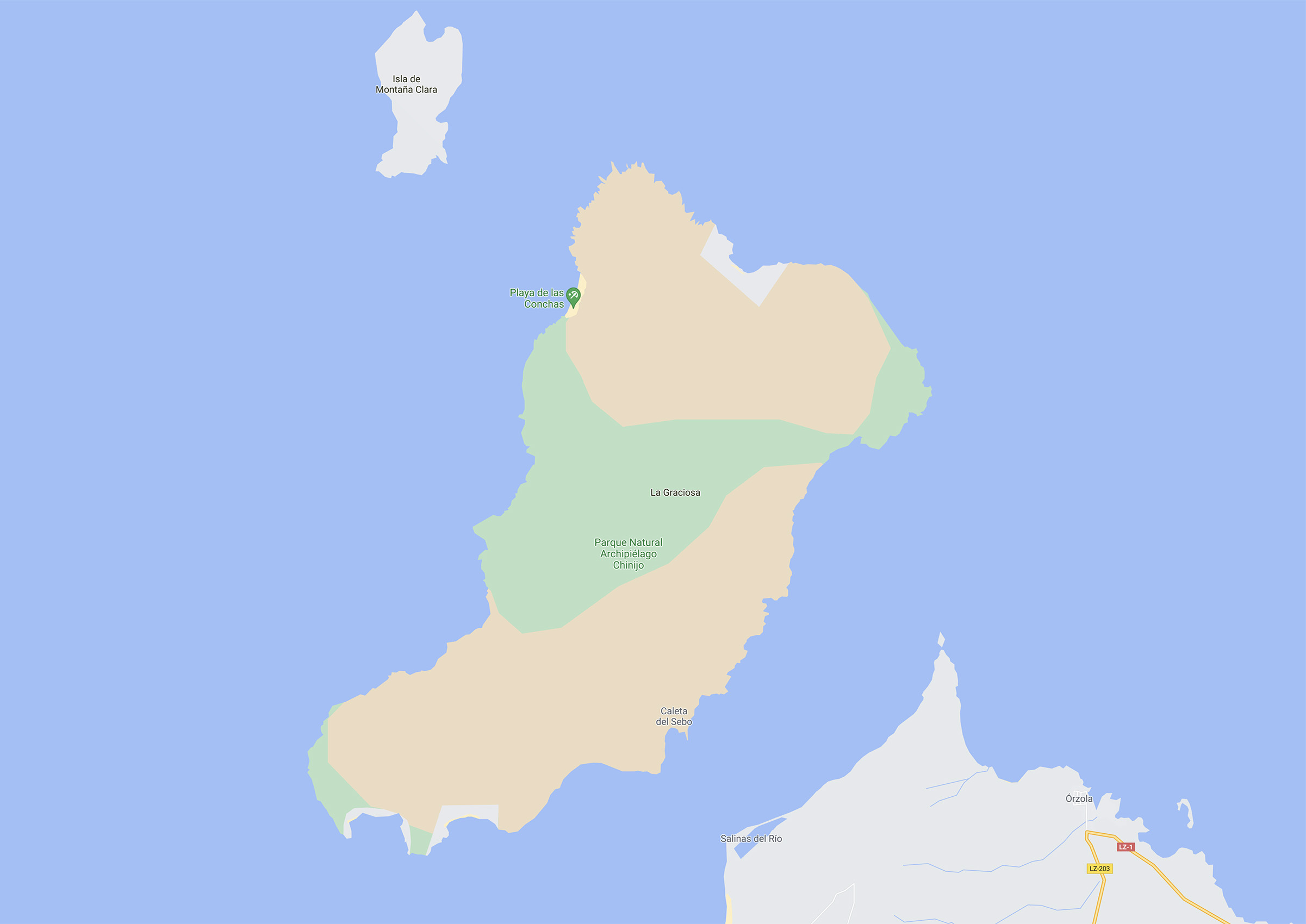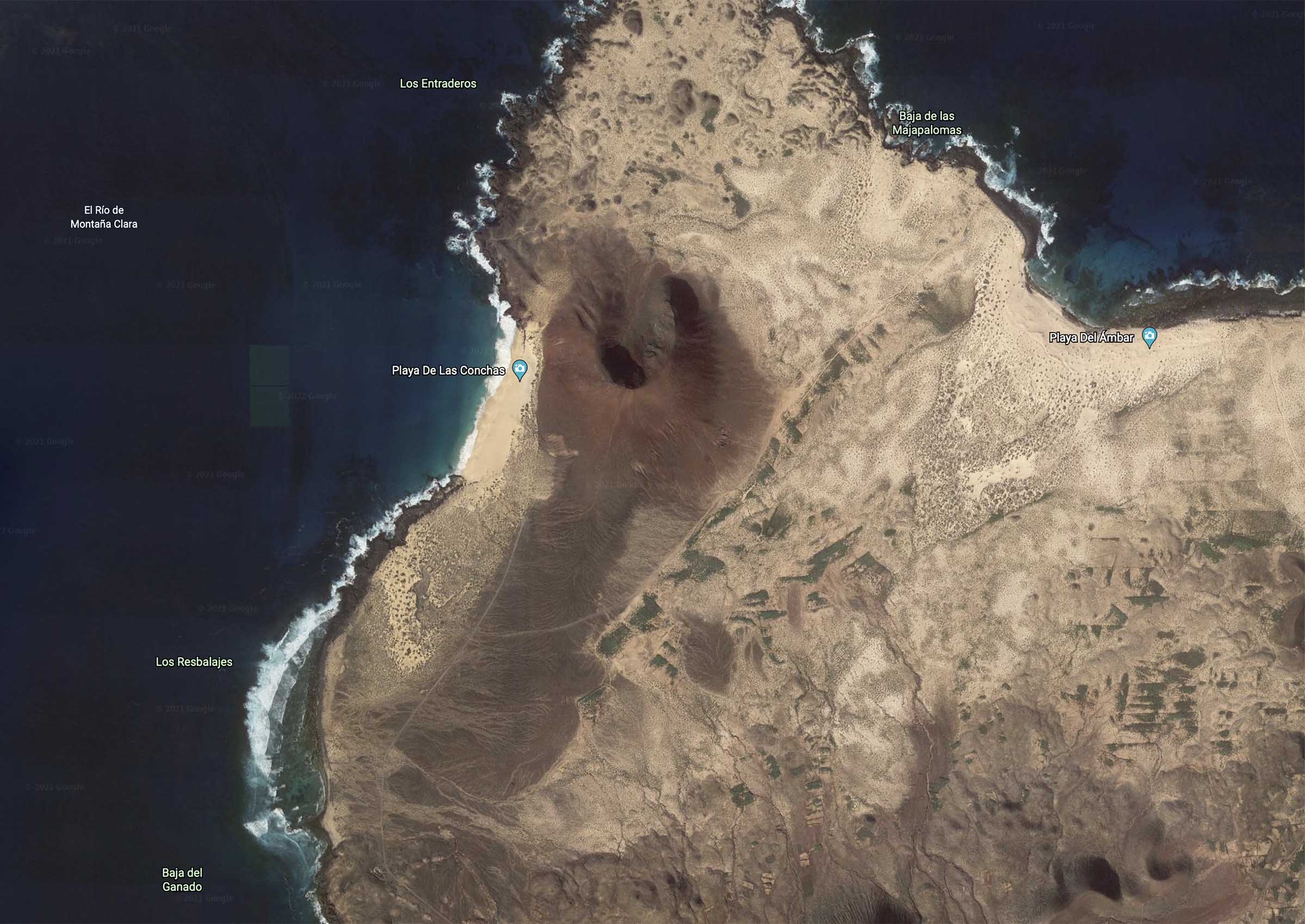
Playa de Las Conchas, a remote beach on a small volcanic island, consists of microscopic marine fragments of smooth mollusk shell sand grains with occasional larger white fragments of less well-worn shell fragments. The lack of geological sand grains is notable given the barren volcanic features of the island.
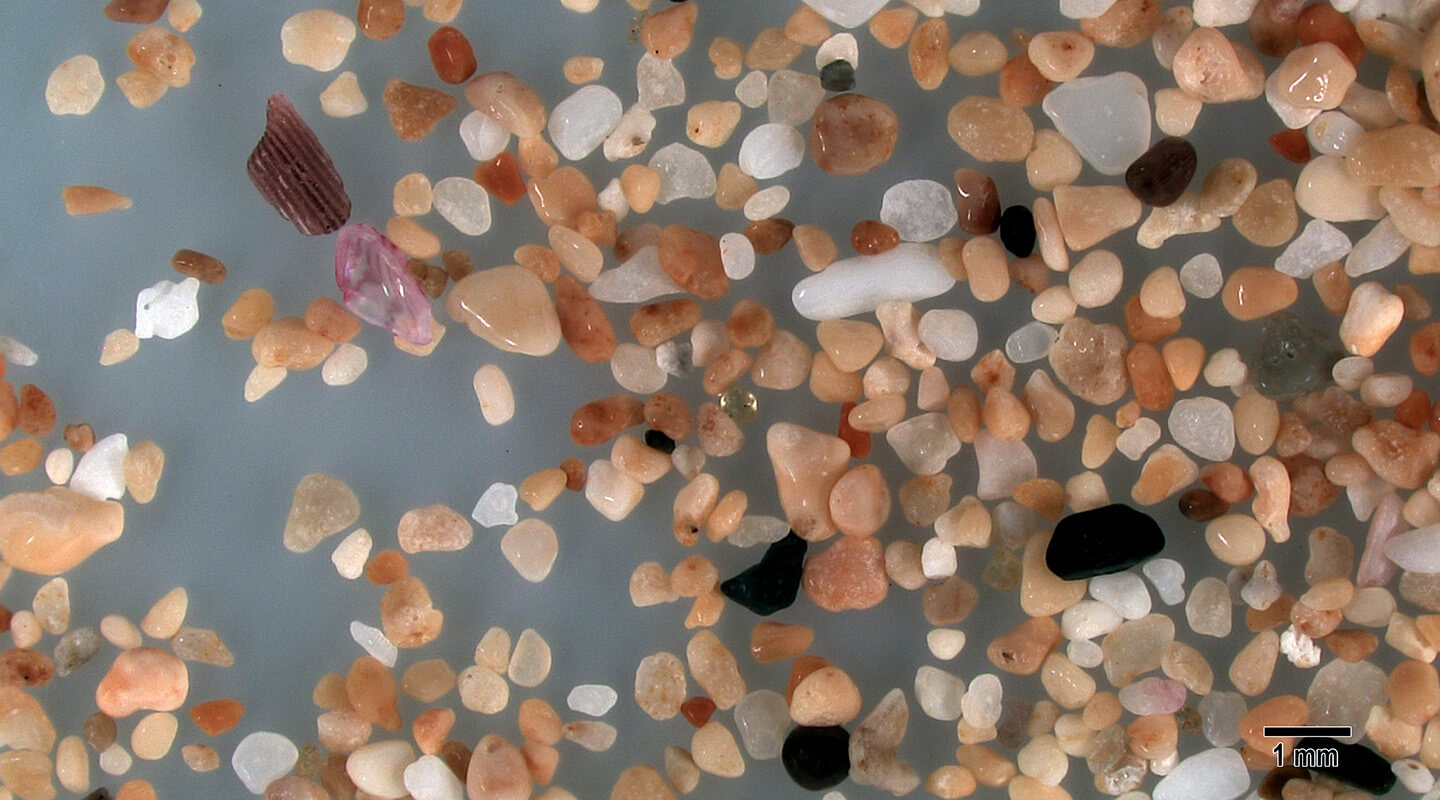
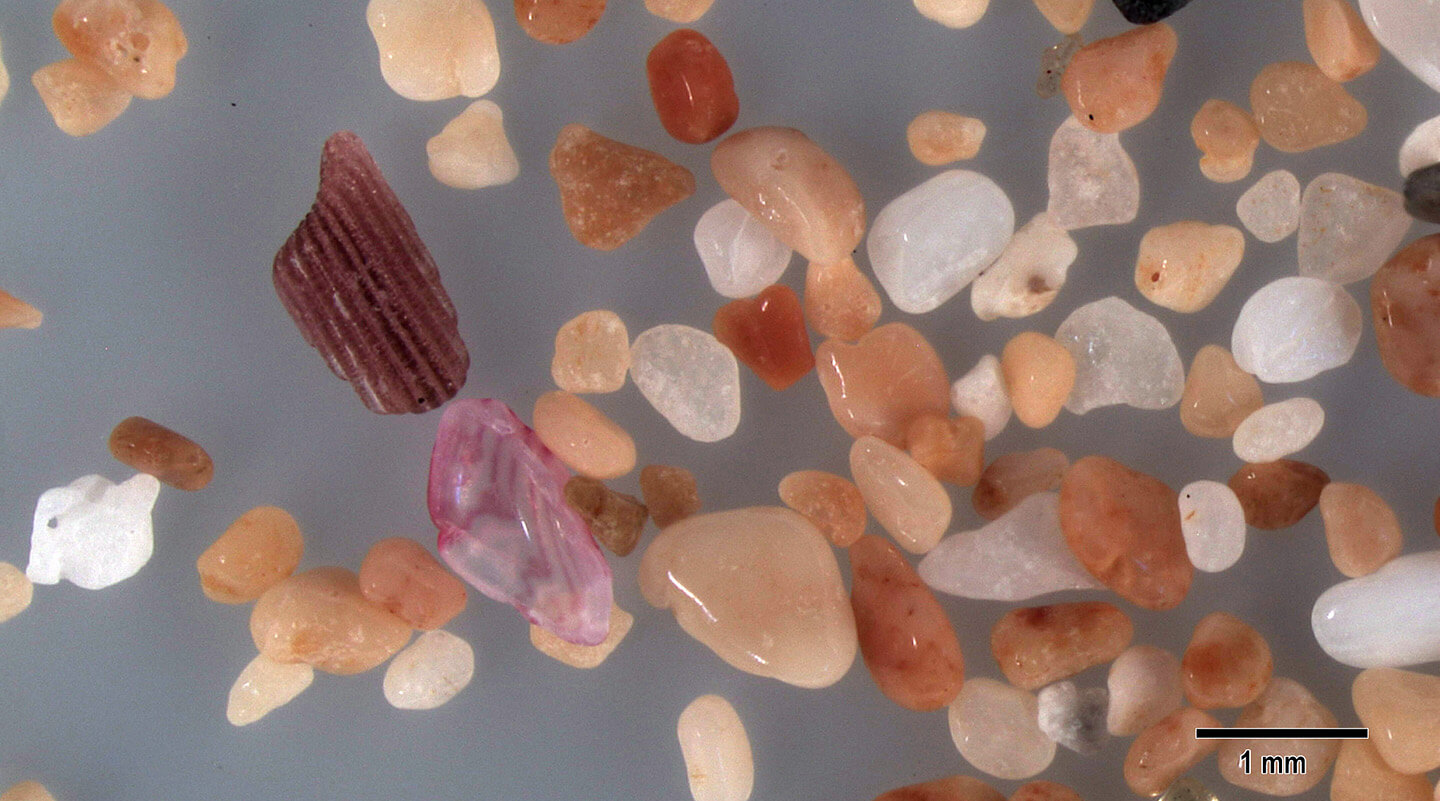
Sand grains are exclusively marine in origin and are smoothly rounded and well worn, making identification of origin difficult. The light and dark tan sand grains are consistent with the golden appearance of the sand. A brown grooved fragment of a sea urchin spine is next to a reddish-pink microshard of a mollusk shell sand grain.
Geographic Overview
Playa de las Conchas is one of the volcanic Canary Island located in the Atlantic Ocean just off the west coast of Morocco. This part of the Canary archipelago has spectacular landscape with a great geoheritage diversity. The lonely beach, a 90-minute hike from the ferry landing site, has golden sand and turquoise water that supports a rich and varied marine biodiversity. Because of its steep entry into the Atlantic and strong undertow, the beach is unsafe for swimming. Playa de las Conchas, called “mussel beach”, is surrounded by the reddish-brown foothills of the Montana Bermeja volcano.
Sand Gallery

Smoothly rounded tan and off-white sand grains are of marine origin and vary in size. Their well-worn appearance make definitive identification difficult.

Most of the smoothly rounded sand grains are of marine origin and likely of mollusk origin, hence the “mussel beach” nomenclature of the beach. A pinkish-tan triangular-shaped sand grain of mollusk origin is at the upper right and a banded reddish-brown mollusk grain at the lower right of the image.
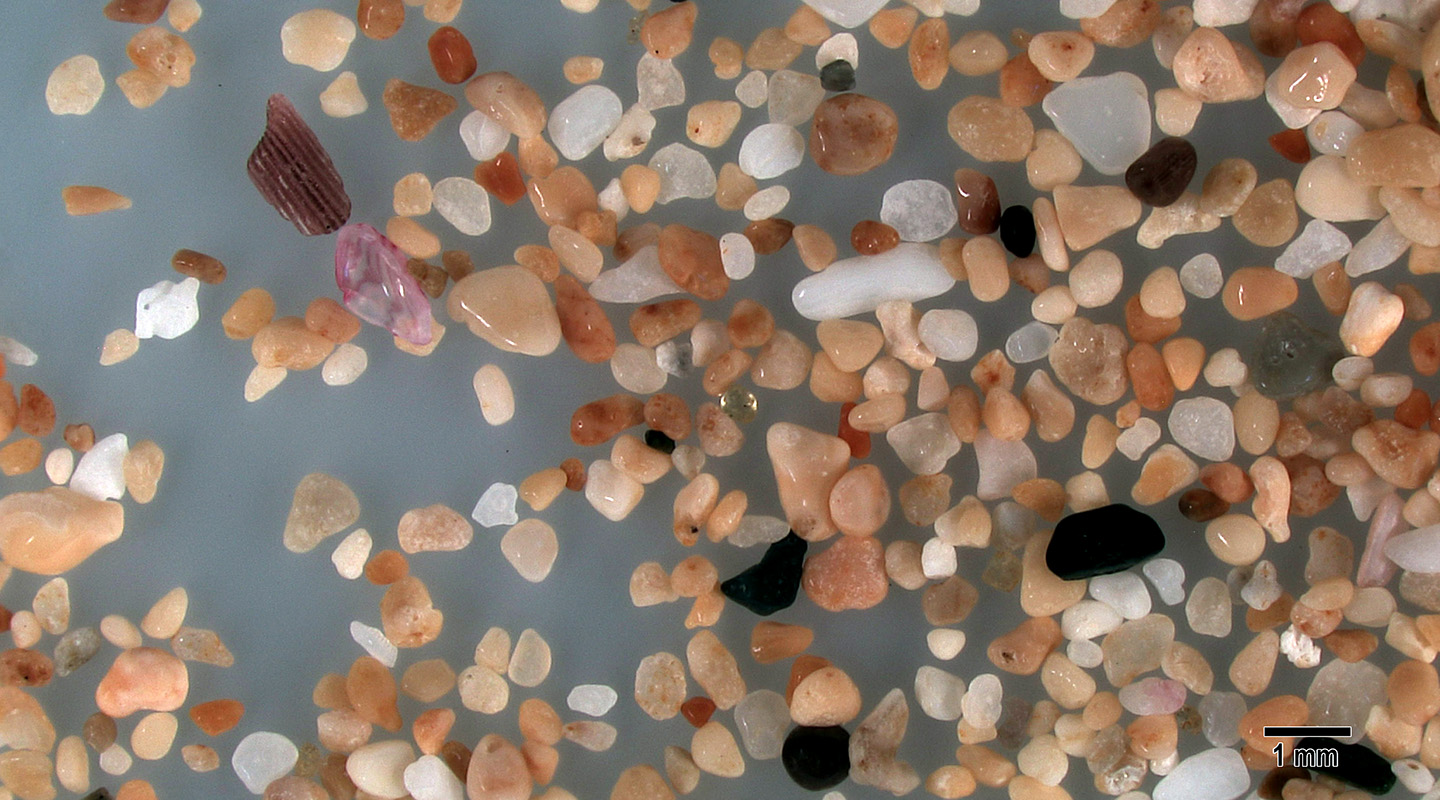
Sand grains are exclusively marine in origin and are smoothly rounded and well worn, making identification of origin difficult. The light and dark tan sand grains are consistent with the golden appearance of the sand. A brown grooved fragment of a sea urchin spine is next to a reddish-pink microshard of a mollusk shell sand grain.
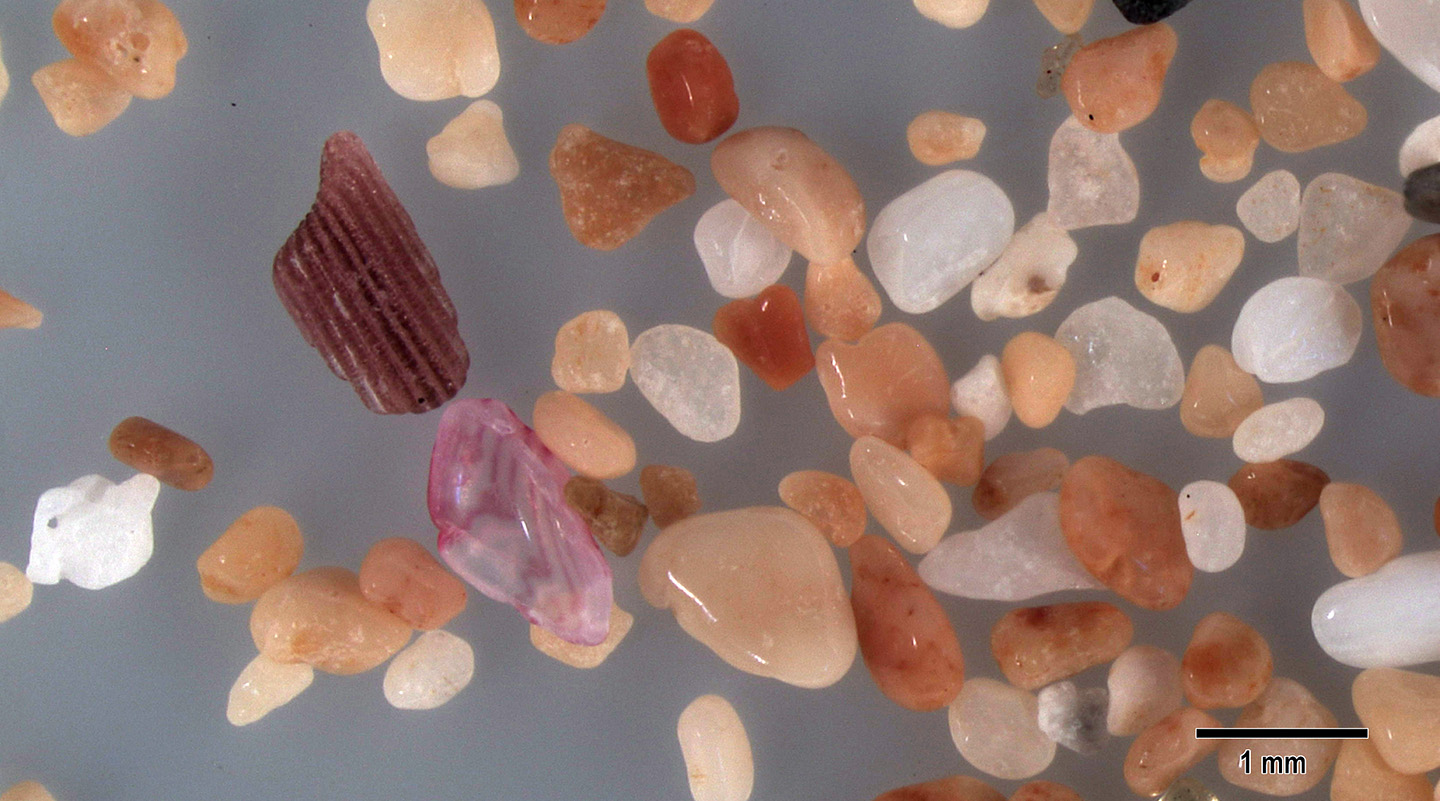
A high magnification shows details of the brown grooved fragment of a sea urchin spine located next to a reddish-pink microshard of a mollusk shell sand grain.
